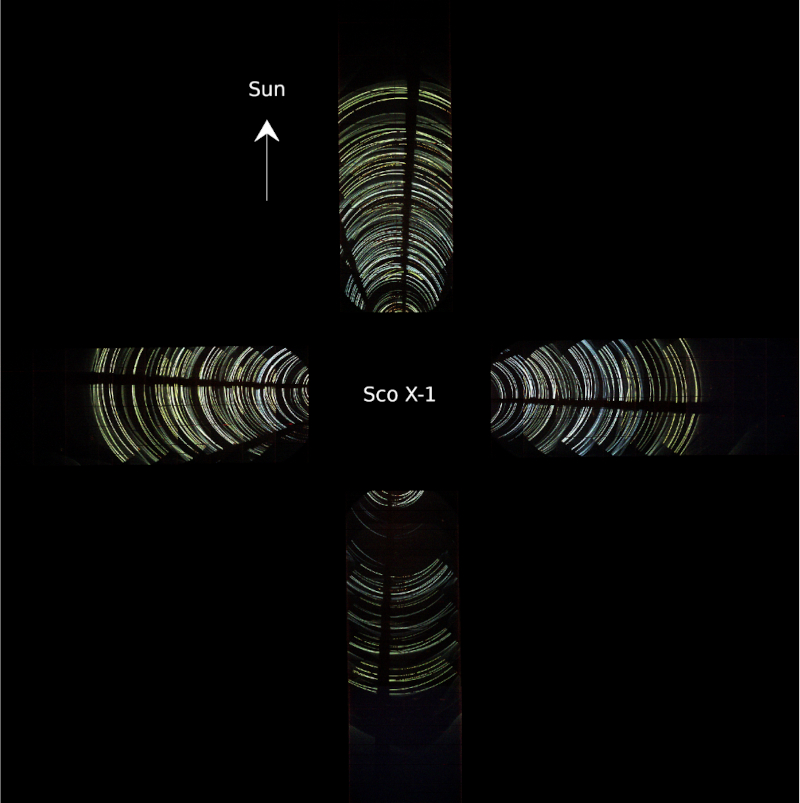
 Credit: PIC Calibration / P. KretschmarXMM-Newton MM / XMM-Newton SOC / ESA and ESA
Credit: PIC Calibration / P. KretschmarXMM-Newton MM / XMM-Newton SOC / ESA and ESA
Reflections of Sco X-1
The accurate physical interpretation of observations by space telescopes requires accurate calibration of the instrument. X-ray space telescopes, like the XMM-Newton X-ray observatory, consist of mirrors which gather and focus light, and detectors to measure the properties of the light the mirrors have gathered: time of arrival, energy, and place of origin of detected X-ray photons. These instruments are tested extensively in laboratories during development, but performance also needs to be verified and tested once they're in space, to see how the enormous stresses of launch have affected the instrumentation. To understand the on-orbit performance of an X-ray space observatory, mission scientists observe a set of cosmic X-ray standard sources which have been studied over many years by many different instruments. One such source is Scorpius X-1. Sco X-1, as it is called, was the first X-ray source ever detected outsid our solar system, and is the brightest X-ray source in the sky. Sco X-1 is a stellar binary system consisting of a neutron star which is rapidly accreting material from a companion star; as the accreted material falls to the neutron star's surface it becomes so energized that it becomes lunminous in X-rays, emitting about 60,000 times as much power in X-rays alone than the total power emitted by the Sun. It's so bright that X-ray space telescopes can see its X-ray glare even when they are not directly pointed at it. The image above is a montage of 4 observations by the XMM-Newton X-ray observatory when the spacecraft was pointed near, but not at, Sco X-1. The bright arcs are produced by X-rays from Sco X-1 bouncing off the 58 individual nested gold-coated reflecting shells that make up each of XMM-Newton's three mirrors. Observations like these are used to measure the alignment of these individual shells to allow scientist to understand and correct any effects of small mis-alignments of the shells on XMM-Newton observations.
Published: June 10, 2024
<
HEA Dictionary ● Archive
● Search HEAPOW
● Other Languages
● HEAPOW on Facebook
● Download all Images
● Education ● HEAD
>

Each week the HEASARC
brings you new, exciting and beautiful images from X-ray and Gamma ray
astronomy. Check back each week and be sure to check out the HEAPOW archive!
Page Author: Dr. Michael F. Corcoran
Last modified Monday, 17-Jun-2024 10:50:43 EDT


